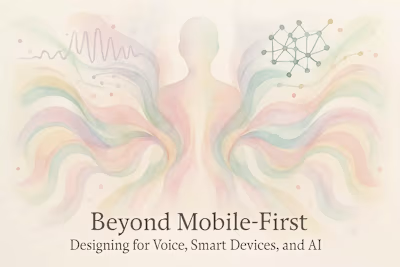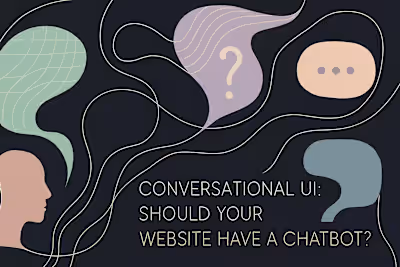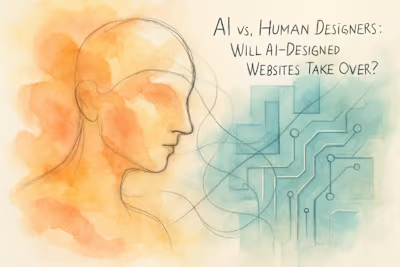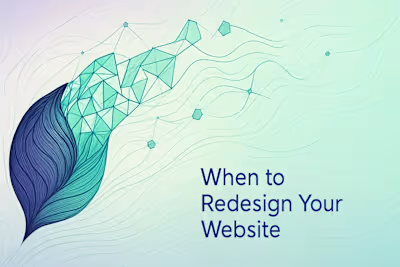Top Web Design Trends of 2025: 3D, Dark Mode, and Beyond
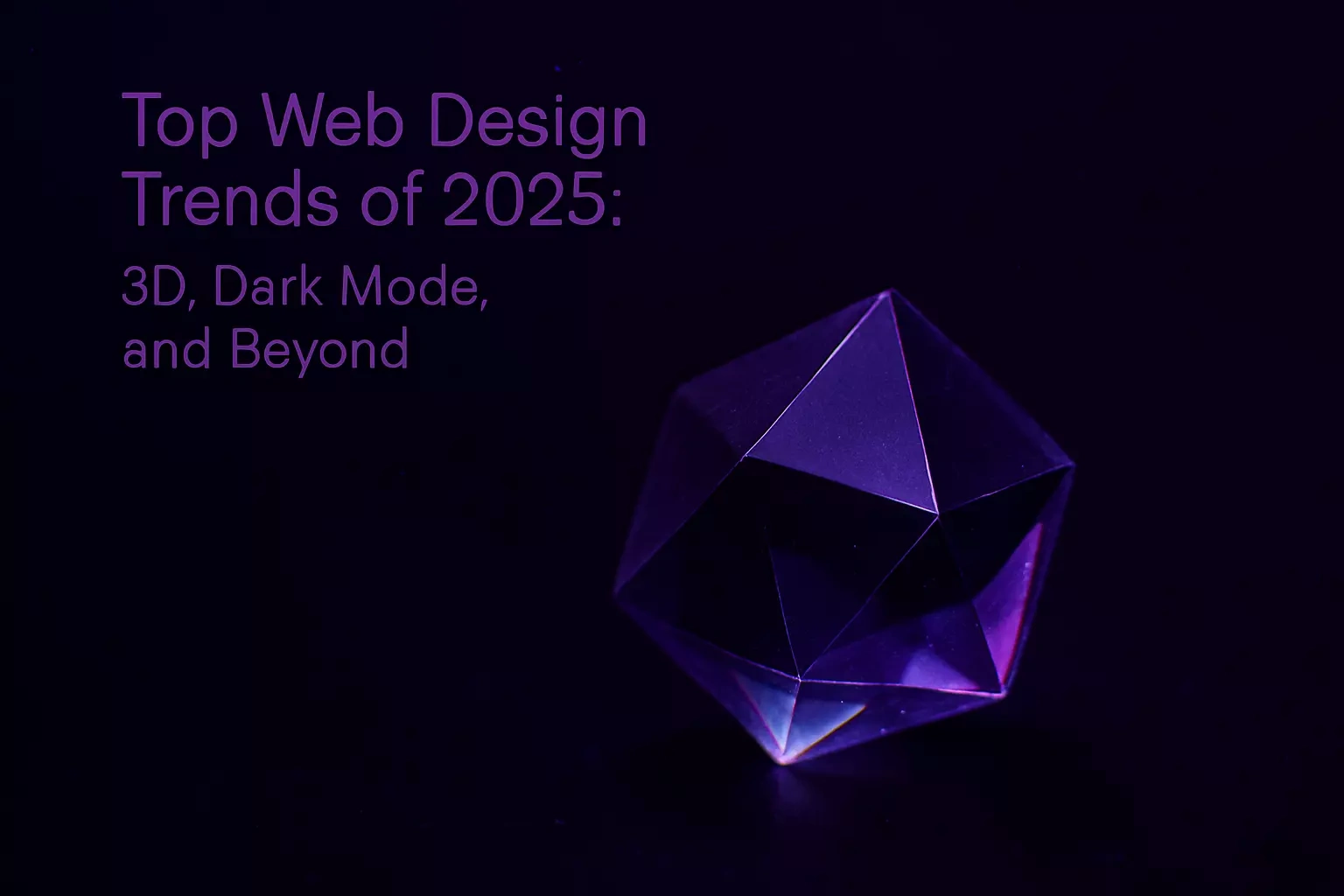
Top Web Design Trends of 2025: 3D, Dark Mode, and Beyond
Visual & Aesthetic Trends
Immersive 3D and Interactive Elements
Dark Mode and 'Vivid Glow' Palettes
Bold and Experimental Typography
Organic Shapes and Natural Textures
User Experience (UX) and Interaction Trends
Micro-interactions and Animations
Scrollytelling and Dynamic Scrolling
Minimalism and 'Bare-Bones Brutalism'
Future-Forward & Ethical Design
Sustainable and Eco-Friendly Design
Enhanced AI Integration
Integration of VR and AR
Conclusion
References
Top Web Design Trends of 2025: 3D, Dark Mode, and Beyond
Web design never stands still. Just when you think you've mastered the latest trends, the digital landscape shifts again. As we dive into 2025, we're seeing a fascinating evolution where websites are becoming more expressive, more personal, and surprisingly more human. Gone are the days of cookie-cutter templates and predictable layouts. Today's web is all about creating experiences that stick with you long after you've closed the browser tab.
The shift we're witnessing isn't just about pretty visuals. It's a fundamental change in how we think about digital spaces. Where AI-Designed Websites once threatened to make everything look the same, designers are pushing back with bold, unexpected choices. And as we move Beyond Mobile-First thinking, we're discovering entirely new ways to connect with users. Whether you're looking to refresh your own site or hire talented web designers for your next project, understanding these trends is crucial.
Visual & Aesthetic Trends
First impressions matter more than ever. In a world where attention spans are measured in seconds, your website's visual impact can make or break user engagement. The trends emerging in 2025 aren't just about looking good – they're about creating memorable experiences that resonate on an emotional level.
Immersive 3D and Interactive Elements
Remember when 3D on the web meant clunky graphics that took forever to load? Those days are long gone. Modern 3D elements are smooth, responsive, and surprisingly lightweight. We're seeing everything from subtle 3D buttons that respond to your cursor to full-blown interactive product showcases that let you explore items from every angle.
Take Nike's latest campaign site, for example. You can rotate their newest sneakers, zoom in on the materials, and even see how they look in different lighting conditions. It's not just eye candy – it's functional design that helps customers make better purchasing decisions. The beauty of modern 3D implementation is that it enhances rather than distracts. Smart designers are using depth and dimension to guide users through content, making navigation feel more intuitive and engaging.
What's really exciting is how accessible these tools have become. You don't need a Hollywood budget anymore. Libraries like Three.js and Spline are putting professional-grade 3D capabilities in the hands of everyday designers. The key is restraint – just because you can make everything 3D doesn't mean you should.
Dark Mode and 'Vivid Glow' Palettes
Dark mode has graduated from trendy feature to essential option. But here's where it gets interesting – designers aren't just inverting colors anymore. They're creating entirely different experiences for dark and light modes, each with its own personality.
The real star of 2025, though, is what designers are calling the "Vivid Glow" aesthetic. Picture this: deep, rich backgrounds punctuated by colors so bright they seem to pulse off the screen. Think electric blues, radioactive greens, and hot pinks that demand attention. Spotify's recent artist pages nail this trend perfectly, using glowing accents that make album artwork pop against dark backgrounds.
But why this sudden love for extreme contrast? It's partly practical – these high-contrast designs look stunning on modern OLED screens. But it's also about creating digital spaces that feel alive and energetic. In a sea of safe, corporate designs, vivid glow palettes help brands stand out and stick in users' minds.
The trick is balancing impact with usability. Too much glow and you'll give visitors a headache. The best implementations use these intense colors strategically – for calls to action, key navigation elements, or to highlight important content.
Bold and Experimental Typography
Typography in 2025 is having a moment. We're talking massive headlines that take up half the screen, fonts that break all the rules, and text treatments that blur the line between words and art. This isn't just about making a statement – it's about using type as a primary design element.
Variable fonts are leading this charge. These magical typefaces can transform from thin to bold, condensed to extended, all in real-time based on user interactions or screen size. Imagine headlines that get bolder as you scroll, or text that stretches and contracts to create visual rhythm. It's typography that responds and adapts, creating a more dynamic reading experience.
Retro influences are huge right now too. We're seeing everything from 70s-inspired bubble letters to 90s techno fonts making comebacks. But these aren't straight copies – designers are mixing vintage styles with modern techniques to create something entirely new. The result? Websites that feel both nostalgic and cutting-edge.
Organic Shapes and Natural Textures
Straight lines and perfect circles are so last year. The web is going organic, embracing the imperfect beauty of natural forms. This trend is about more than aesthetics – it's a reaction to our increasingly digital lives. By bringing natural elements into web design, we create spaces that feel more human and approachable.
Think flowing curves that guide your eye across the page, or backgrounds that mimic the texture of paper, stone, or fabric. These elements add depth and warmth to digital spaces. Brands like Patagonia and Aesop have mastered this approach, using organic shapes and earthy textures to reinforce their connection to nature.
But organic doesn't mean chaotic. The best examples of this trend use natural forms strategically to create visual hierarchy and flow. A curved section divider here, a textured background there – small touches that add up to a more inviting overall experience.
User Experience (UX) and Interaction Trends
Pretty pictures only get you so far. The real magic happens when design and function work together seamlessly. The UX trends of 2025 focus on creating interactions that feel natural, intuitive, and even delightful.
Micro-interactions and Animations
Micro-interactions are the unsung heroes of great web design. They're those tiny animations and responses that happen when you hover over a button, fill out a form, or complete an action. Done right, they make websites feel alive and responsive.
The trend in 2025 is toward more sophisticated, context-aware micro-interactions. Instead of generic hover effects, we're seeing animations that provide real feedback and guidance. A shopping cart icon that bounces when you add an item. Form fields that celebrate when you enter valid information. Loading animations that actually show progress instead of just spinning endlessly.
The key is purposeful animation. Every movement should have a reason, whether it's confirming an action, preventing errors, or simply adding a moment of delight. Too many animations and your site feels chaotic. Too few and it feels static. The sweet spot is when users don't consciously notice the animations but would definitely miss them if they were gone.
Scrollytelling and Dynamic Scrolling
Scrolling used to be just a way to see more content. Now it's becoming part of the story itself. Scrollytelling transforms the simple act of scrolling into an interactive narrative experience. As users move down the page, elements animate, images parallax, and content reveals itself in choreographed sequences.
The New York Times has been pioneering this approach with their interactive articles. As you scroll through their climate change features, for instance, glaciers melt before your eyes, graphs animate to show change over time, and maps transform to reveal impact. It's journalism that you don't just read – you experience.
But scrollytelling isn't just for media sites. E-commerce brands use it to showcase product features, SaaS companies use it to explain complex concepts, and portfolios use it to create memorable presentations. The magic is in the pacing. Good scrollytelling knows when to speed up, when to slow down, and when to let users pause and absorb.
Minimalism and 'Bare-Bones Brutalism'
Minimalism is evolving. While clean, simple designs remain popular, a new breed of ultra-minimal sites is emerging. We call it "bare-bones brutalism" – websites that strip away everything except the absolute essentials.
These sites embrace raw HTML aesthetics, default system fonts, and stark layouts. They load instantly, work on any device, and put content front and center. It's a deliberate rejection of over-designed, bloated websites. Think of it as the web design equivalent of brutalist architecture – functional, honest, and unapologetically raw.
But don't mistake simple for easy. Creating an effective brutalist site requires incredible discipline. Every element must earn its place. Every word must matter. It's about finding beauty in constraint and making bold statements through what you leave out rather than what you include.
Future-Forward & Ethical Design
The most exciting trends of 2025 aren't just about how websites look – they're about what they represent. Designers are increasingly considering the broader impact of their work, from environmental concerns to technological possibilities.
Sustainable and Eco-Friendly Design
Web design has a carbon footprint, and designers are finally taking notice. Every image loaded, every animation rendered, every video played requires energy. Multiply that by billions of page views, and the environmental impact becomes significant.
Sustainable web design is about making conscious choices to reduce this impact. It means optimizing images ruthlessly, choosing efficient code over flashy effects, and selecting green hosting providers. Some designers are even creating "low-carbon" modes for their sites – stripped-down versions that load faster and use less energy.
But here's the beautiful part: sustainable design often leads to better user experience. Faster load times, cleaner layouts, and focused content benefit everyone. Companies like Organic Basics have shown that eco-friendly design doesn't mean boring design. Their website is both stunningly minimal and incredibly efficient.
Enhanced AI Integration
AI isn't replacing designers – it's giving them superpowers. In 2025, we're seeing AI woven into websites in subtle but powerful ways. Personalization engines that adapt content in real-time. Chatbots that actually understand context and nuance. Image optimization that happens automatically based on user bandwidth.
The trend is toward invisible AI – features that work so smoothly users don't realize they're there. Netflix's recommendation engine is a perfect example. It feels like magic, but it's just smart algorithms learning from behavior. We're seeing similar approaches in e-commerce, where AI predicts what products you'll love, or in news sites that customize article recommendations based on reading patterns.
The challenge is maintaining the human touch. The best AI-enhanced sites use technology to enable better human experiences, not replace them. They augment rather than automate, enhance rather than eliminate.
Integration of VR and AR
Virtual and augmented reality on the web is still in its early days, but 2025 is when we're starting to see practical applications emerge. We're not talking about gimmicky effects – we're talking about genuine utility.
Furniture retailers let you place virtual sofas in your actual living room. Museums offer virtual tours that feel almost as good as being there. Educational sites use AR to bring complex concepts to life. The technology is finally catching up to the promise.
What's exciting is how accessible these experiences are becoming. You don't need special headsets or high-end hardware. Modern browsers support WebXR, making immersive experiences available to anyone with a smartphone. The key is finding the right balance – using VR and AR where they add real value, not just because you can.
Conclusion
The web design trends of 2025 reflect a maturing industry that's confident enough to take risks and wise enough to consider consequences. We're seeing designers push boundaries while staying grounded in user needs. The future isn't about choosing between beautiful and functional, innovative and accessible, bold and sustainable. It's about finding ways to achieve all of these goals simultaneously.
Whether you're redesigning your portfolio, launching a new product, or building the next big thing, these trends offer a roadmap for creating websites that resonate in 2025 and beyond. The key is to pick the trends that align with your brand and your users' needs. Not every site needs 3D graphics or brutalist aesthetics. But every site can benefit from thoughtful design that puts users first while pushing creative boundaries.
The web is more exciting than ever. Let's build something amazing.
References
Like this project
Posted Jun 30, 2025
Stay ahead of the curve! Discover the top web design trends for 2025, from immersive 3D elements and bold typography to the enduring popularity of dark mode and sustainable design.







